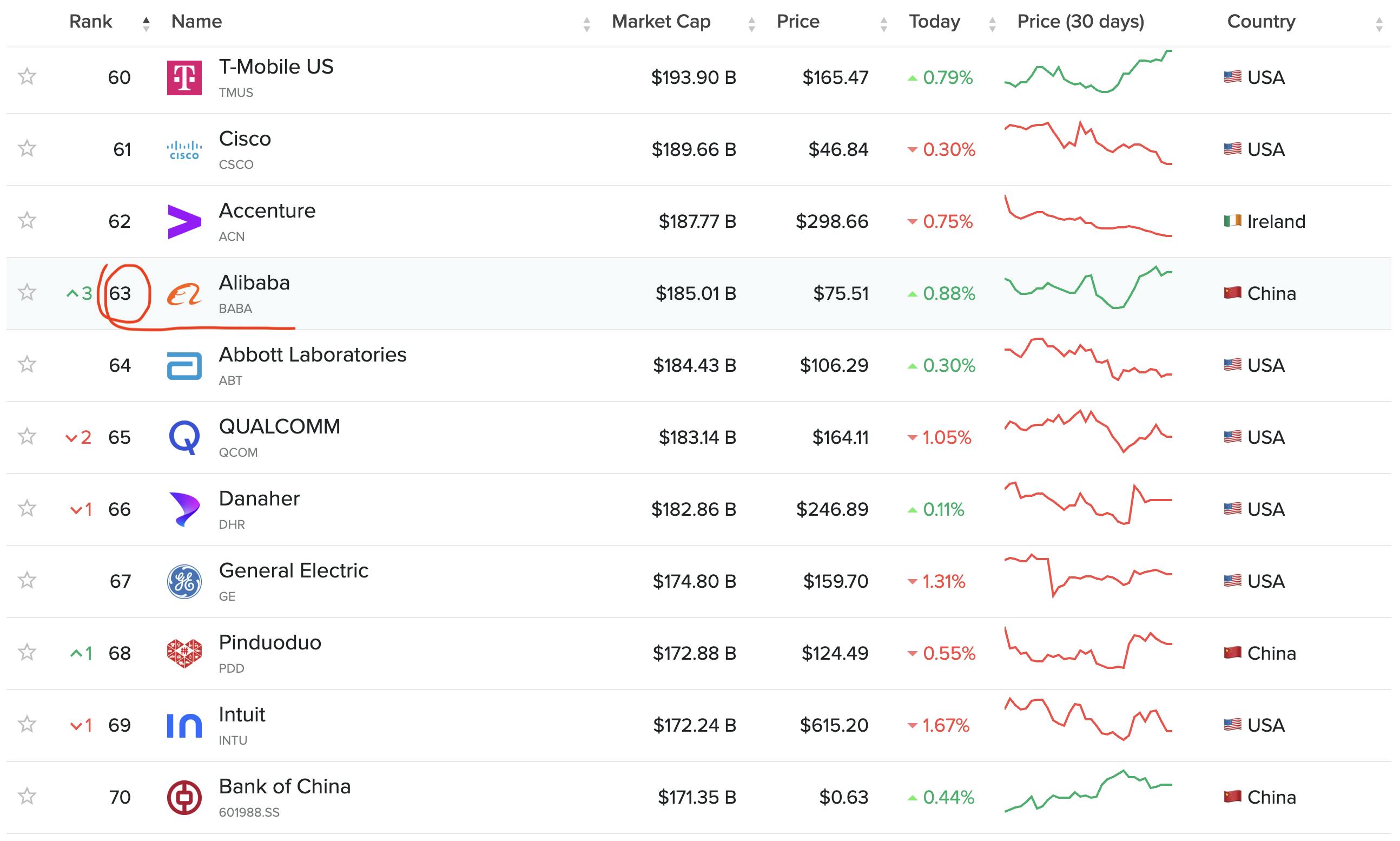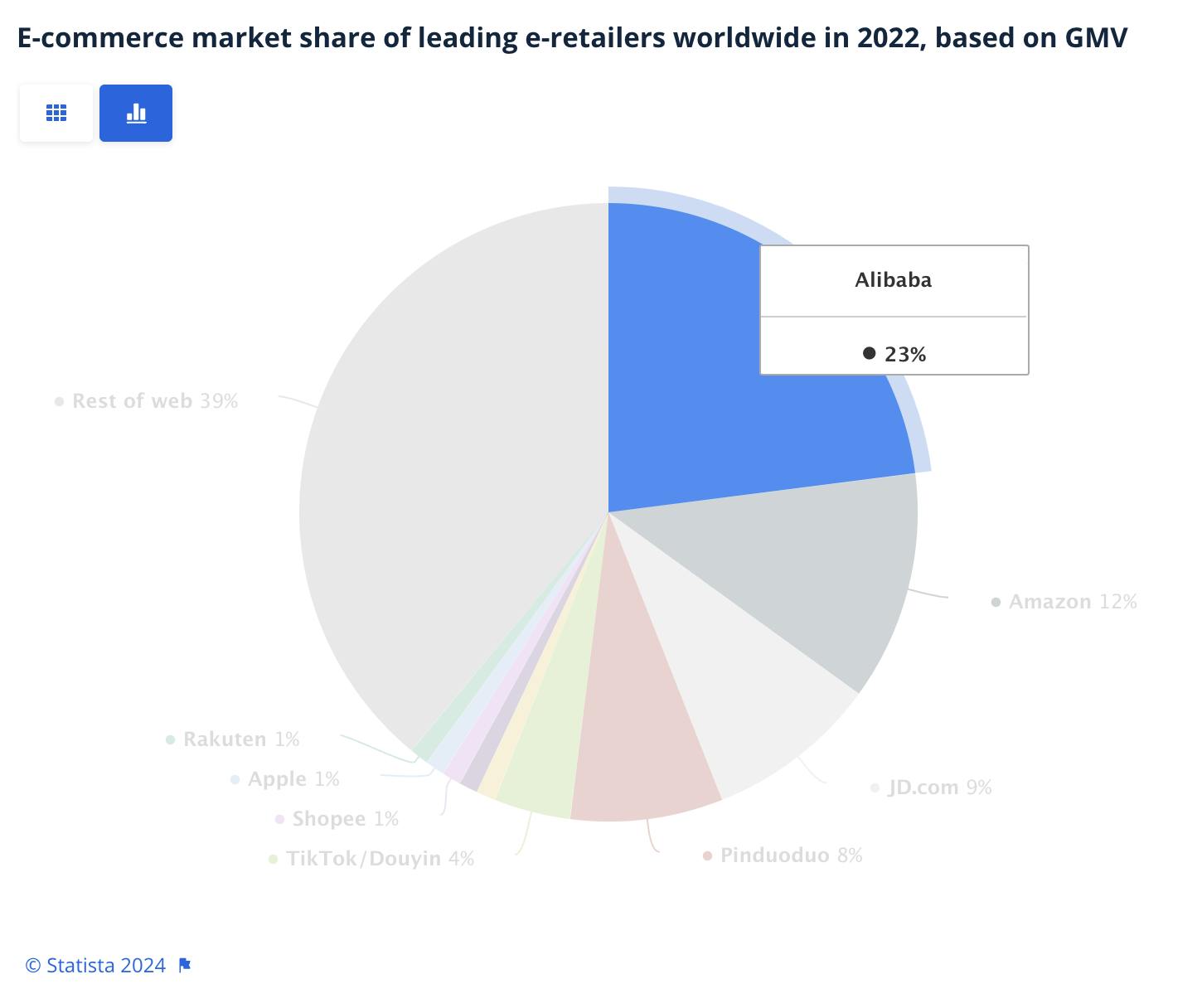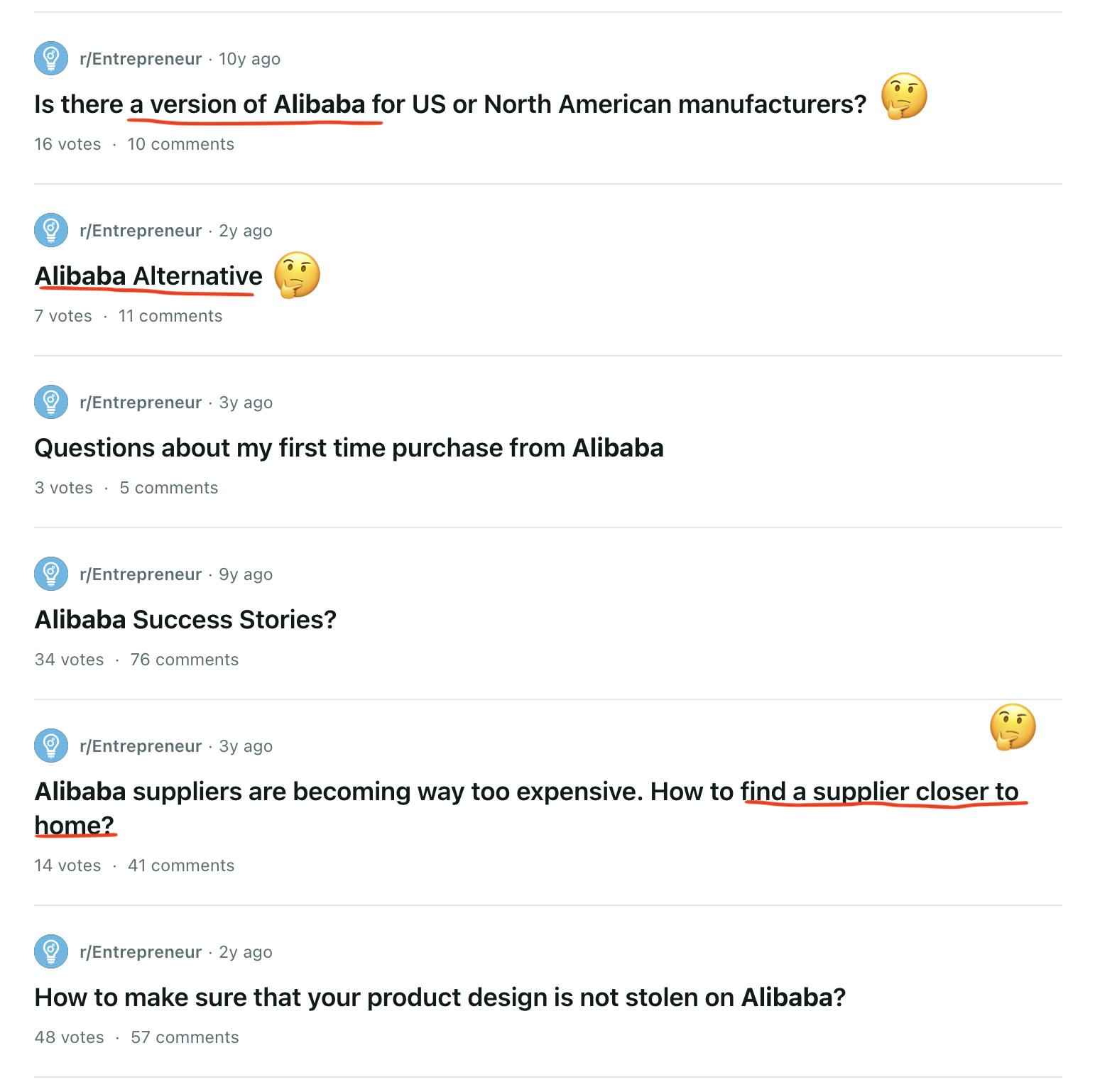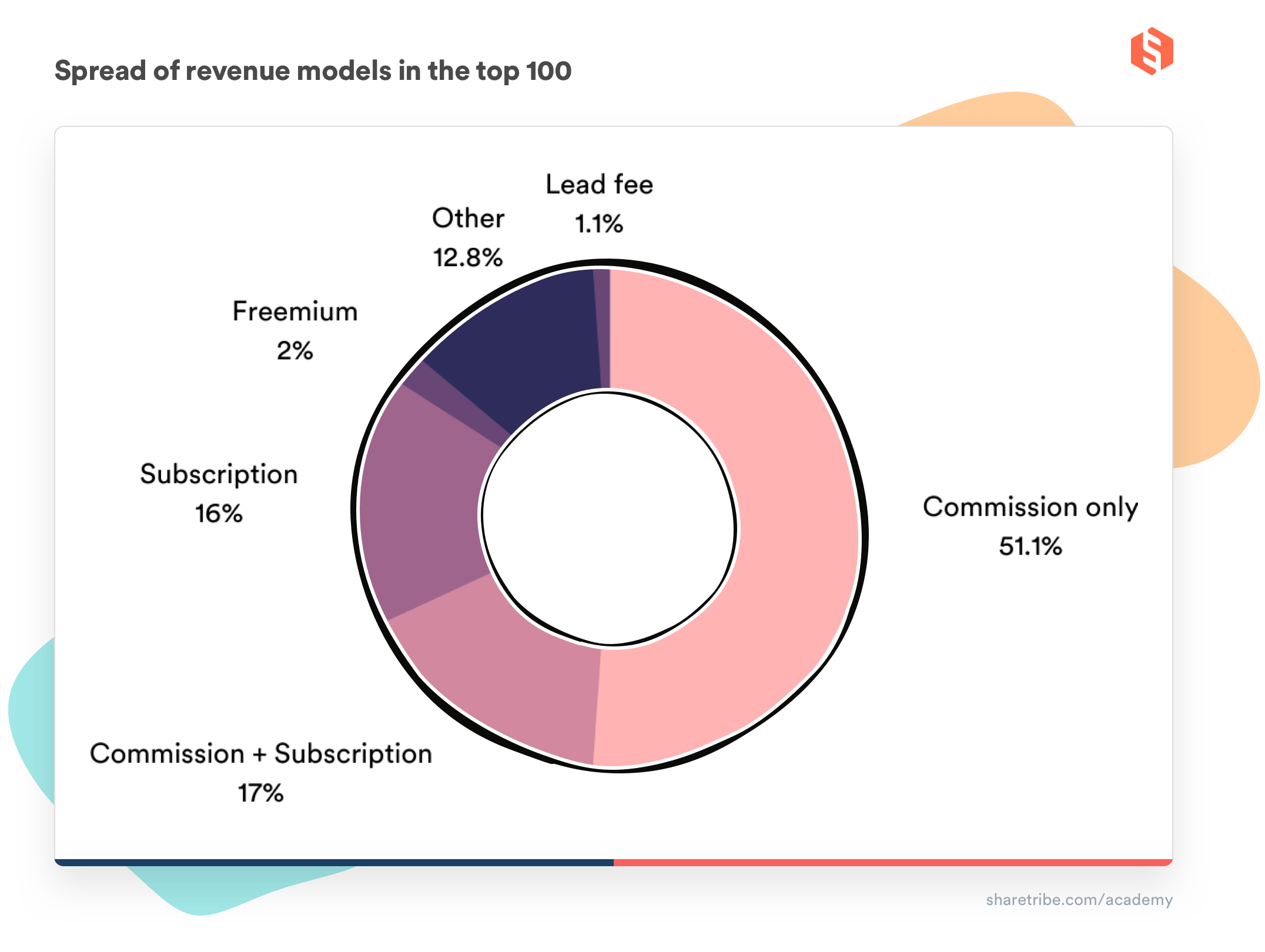How to build a website like Alibaba
Alibaba has the biggest market share in eCommerce retail. Here's how you can build a platform similar to Alibaba (or AliExpress, or Taobao).
Alibaba is one of the largest e-commerce companies globally. As of April 2024, the Chinese company's market cap was $176.46 billion. This gets Alibaba into the top 70 most valuable companies globally.

Alibaba's success isn't a one-off story—several other founders have built thriving websites like Alibaba.com. In fact, their success shows huge entry opportunities for others, especially for marketplaces that focus on specific niches or customers. In this guide, we'll explain how to create a website like Alibaba, from coming up with an idea to launching the MVP and scaling it.
Online marketplaces have experienced significant growth in recent years due to consumers' increasing choice to shop online.
In 2023, global e-commerce sales were estimated to have reached 5.8 trillion U.S. dollars. Projections suggest that this figure will grow by 39% over the coming years, with expectations to exceed eight trillion dollars by 2027.
Within this expansive market, Alibaba maintains its position as the world's largest e-commerce retailer, holding a 23 percent market share.

This growth presents an opportunity for increased competition, particularly from smaller competitors who focus on specific niches or geographic markets.
Besides, building a marketplace like Alibaba has become an easy startup model that does not require a large team or budget. Here's why:
- You don’t need personal inventory. You only need to facilitate transactions between sellers and buyers. This saves you the financial burden of handling or stocking your own products.
- There’s a low barrier to entry: Modern no-code tools have made creating and launching a marketplace easier and faster than ever. Platforms like Sharetribe let you build a functional marketplace in just one day without any coding knowledge.
- You can test and iterate easily: This accessibility lets you quickly launch your marketplace, test your business, gather feedback, and iterate on ideas before making significant investments.
- You can scale and customize easily: The marketplace model scales extremely well, again thanks to low barrier to entry and access to dedicated marketplace technology. For example, Sharetribe lets you add custom coding and develop advanced features to your no-code marketplace to scale it up.
Overall, creating a successful online marketplace is more feasible now than when Alibaba first started. This guide explains proven methods to create a platform like Alibaba.
Like eBay and Amazon, Alibaba operates as an online marketplace that connects sellers to buyers. However, while eBay and Amazon focus on the B2C and C2C audiences (with dedicated solutions for B2B), Alibaba is primarily a B2B marketplace.
Retailers list their products by creating detailed descriptions, images, pricing, etc. Through a seller dashboard, they can manage inventory, orders, shipping, and customer communication. Alibaba also provides tools for promotions, analytics, and expanding product reach.
At the retail buyers' end, they can browse a list of products or services from multiple sellers. They can search, filter, compare offerings, and shop securely. Moreover, Alibaba also offers features like customer reviews, wish lists, and custom recommendations to improve customers' shopping experience.
So, how does Alibaba make money from its customers?
The Alibaba Group is a large and diversified enterprise with lots of revenue streams from different types of services and subsidiaries. Let’s take a closer look at how the platforms underneath Alibaba monetize.
On Alibaba, sellers pay a membership fee to post listings on the platform. Fees for US sellers, for example, start from $166 per month on the Basic plan, growing up to $1,833 per month for the Verified Supplier plan. The plans include different levels of services. The lower plans have limited product showcasing, and the higher plans include some advertising credits, for example. Alibaba also offers advertising services on its platform, and logistics services through its subsidiary Cainiao.
On Alibaba’s B2C and C2C platforms AliExpress and Taobao, commission is the main business model.
In the commission model, sellers do not need to pay anything to list their goods on Alibaba, but the platform charges a transaction fee when each item is sold. The commission varies from 5% to 8% of the transaction value.
Before you get confused about the difference between Alibaba and AliExpress, let's explain the difference.
Alibaba is a B2B platform for businesses to source and trade goods in bulk. AliExpress is a B2C platform for individual consumers to purchase products directly from sellers, primarily in small quantities and at lower prices.
While the Alibaba Group owns AliExpress, AliExpress serves as Alibaba's retail arm, allowing the company to tap into the global consumer market.
Aside from alibaba.com and aliexpress.com, the Alibaba Group has scaled over time into different marketplaces and niches. Here is a list of them:
- Taobao: An online peer-to-peer shopping platform for consumers in China.
- Tmall: A platform for brands and retailers to sell products directly to consumers.
- 1688.com: A wholesale marketplace that connects domestic manufacturers, traders, and suppliers.
- Alibaba Cloud: Provides cloud computing services like data storage, data processing, and cloud security solutions.
- Youku: One of the leading online video platforms in China.
- Alibaba Pictures: Produces and distributes films and television programs.
- Cainiao Network: A logistics data platform that coordinates shipping and delivery services.
Alibaba was founded in 1999 by Jack Ma, a former English teacher, and 17 others in Ma’s small apartment in Hangzhou. This was when China's internet infrastructure was just beginning to develop.
Their goal was simple: to connect Chinese suppliers with buyers worldwide.
Over the years, Alibaba expanded into consumer-to-consumer and business-to-consumer sales, establishing marketplaces like Taobao, Tmall, 1688.com, and AliExpress. Today, it has become one of the world's largest and most comprehensive e-commerce networks.
Here are some lessons you can learn from Alibaba when building a marketplace:
- Focus on a well-defined niche: Alibaba's early success was due to its focus on the goal of connecting small and medium-sized Chinese manufacturers with buyers worldwide. This was a largely untapped market then, especially in China, where the Internet economy was still in its infancy.
- Leverage local knowledge: Alibaba’s knowledge of Chinese regulatory and cultural contexts helped it solve challenges that often hinder foreign competitors. For instance, Alibaba’s Taobao competed with eBay in China by offering a free platform for users, compared to eBay's fee-based mode.
- Start small, scale smartly: After mastering the B2B space, Alibaba moved into the consumer sector with new platforms.
- Iterate and innovate continuously: To stay ahead of the competition, Alibaba constantly innovates. It invests in technology and logistics and improves customer experience and efficiency. This approach has kept the platform relevant and highly competitive globally.
Next, we’ll take insights from Alibaba's success story and provide you with 10 practical steps to help you build a successful and scalable business like Alibaba.
Let’s get started.
From our experience at Sharetribe, the process of building a successful marketplace like Alibaba follows 10 steps:
- Identify a strong marketplace idea.
- Choose the right marketplace business model.
- Start with a focused scope.
- Pre-validate your marketplace idea.
- Build a marketplace platform, starting with an MVP (Minimum Viable Platform).
- Onboard your first sellers.
- Launch your marketplace.
- Reach problem-solution fit.
- Reach product-market fit.
- Scale into new markets.
This is the process we’ve seen work time and time again as we’ve worked with hundreds of marketplace founders who used them.
Next, we’ll discuss these 10 steps specifically in the context of building a website like Alibaba. If you want more information and useful resources, you can check out our complete guide on building an online marketplace.
One strategy for finding a marketplace idea similar to Alibaba is to examine existing large marketplaces like Alibaba itself.
During your research, try to identify any of the following:
- Potential market gaps
- Underserved niche
- Areas that could benefit from a more specialized or niche-focused approach.
- Categories where you have expertise and experience.
One good way to do that is to join communities like Reddit, Quora, and niche forums that discuss Alibaba issues specifically. Look out for recurring complaints, suggestions, or wish lists that buyers or sellers express about their Alibaba experience.
For example, there are many discussions around Alibaba on the r/Entrepreneur subreddit. While many are about asking for advice and experiences, several discussions have been started around Alibaba alternatives.

You'll also spot some threads around some reliability issues. For example, some major recurrent problems users complain about on Alibaba are fake sellers, resellers disguised as manufacturers, low-quality products, and issues with popular electronics.
Researching more yourself could give you a clue as to which niche and problem to focus on.
Generally, marketplaces use one or more of these six different types of marketplace business models:
- Commission
- Subscription
- Listing fees
- Lead fees
- Freemium models
- Featured listings/advertising.
While Alibaba monetizes through membership fees, the commission-based model is the most popular revenue model among marketplaces especially in the B2C and B2B niches (like Alibaba’s consumer-facing platforms AliExpress and Taobao).
The reason is not far-fetched—it’s user-friendly. Users only pay you when they get value themselves, and using the platform is free before transactions occur. Membership fees tend to work at later stages, when a marketplace has already established itself and sellers know the platform offers value to justify paying an upfront fee.
As for the marketplace founder, the more the user base grows, the higher your commission profits will be, too—a win-win situation.
As mentioned earlier, Alibaba’s primary revenue model combines subscription fees, additional service fees, and featured listings and advertising.
However, at Sharetribe, we advise our clients to focus on the value proposition and avoid setting too many fees at the initial stage of the business.
In our research, we found that a commission-based model powers most of today’s most successful marketplace startups. For most marketplace concepts, commission is the best initial revenue strategy.

Start with a focused scope and gradually expand rather than attempting to tackle a broad market from the outset. This approach allows you to validate your concept, gain traction, and refine your offerings before scaling further.
This is exactly what Alibaba did—they started with a focused B2B (business-to-business) marketplace from small and medium-sized Chinese suppliers to the world. After that, they gradually expanded Alibaba globally, and also ventured into consumer-to-consumer and business-to-consumer sales with marketplaces like Taobao, Tmall, and AliExpress.
This enabled Alibaba to understand its target audience's unique needs and pain points and iteratively improve its platform to serve them better.
Following a similar strategy, consider limiting both the geography and niche of your initial marketplace. Today’s landscape is competitive, so the tighter your focus, the better your chances are to create a competitive value proposition. For example, you could focus on B2B selling in your country and in just one of Alibaba’s product categories.
Once you've achieved success and product-market fit within the your original niche, you can then consider expanding into adjacent industries and/or new locations, using the lessons and expertise from the initially focused scope.
Assumption is the mother of mistakes, and building a marketplace is no different.
Sometimes, your assumptions about your marketplace idea—the problem and solutions—may be wrong. Or there may not be enough market to earn a profit. That’s why you must pre-validate your idea before investing significant resources into building it.
This step can save you time, effort, and money by ensuring that you're pursuing a viable concept that resonates with your target audience.
One effective approach is to join the earlier-mentioned Alibaba seller communities, find a sub-group that is dedicated to your specific niche, and become active there.
Ask experienced suppliers and buyers if they have the problem you assumed and how they are or would solve it. Then, pitch a prototype of your idea and listen to their feedback.
If the feedback doesn’t align with your assumption, change your approach and validate again!
Overall, the point is you must test your idea with industry insiders who deeply understand or face the pain points and challenges in that particular domain of your idea.
Alibaba's initial versions were far less feature-rich or visually appealing than they are today, but they were good enough to validate the idea and get insights for future iterations and expansions.

Likewise, when creating your marketplace MVP, focus on core value propositions and transaction ease. Basically, your MVP should let users browse an online product catalog, place secure orders, and make payments. (Sometimes, even less than that—we’ve talked to several founders whose MVP consisted of a simple website, a spreadsheet, and tons of manual work.)
Avoid overloading with fancy features at the start, and at the same time, you shouldn’t compromise on the user experience.
If you’re not a developer yourself, you have three other options to create an MVP like Alibaba's:
- Find a technical co-founder who shares your vision to build it for free.
- Find skilled freelancers on platforms like Upwork or Fiverr.
- Build your MVP yourself using no-code platforms.
The first option is hard to find, and the second option, as you know, may take a lot of time and is not cost-friendly. The third is much easier and faster.
For example, a no-code marketplace builder like Sharetribe offers a platform that lets you quickly launch a marketplace in a few days without writing a single line of code. This can significantly reduce the time and resources required to bring your MVP to market.
Remember, the main purpose of launching your MVP is to gather feedback to determine what to enhance, modify, or develop next based on real user behaviors.
When building your MVP, you may need to decide whether you need a multi-vendor shopping cart. A multi-vendor shopping cart lets buyers purchase products from multiple sellers within a single transaction, streamlining the checkout process.
It's a key feature on Alibaba, but not every marketplace like Alibaba needs one.
For example, a niche that deals with single-item transactions like unique art pieces or collectible items may not need one. Or if the logistics of combining items from different vendors are too complex in the case of customized furniture or made-to-order clothing.
On the other hand, platforms like Alibaba and Amazon have multi-vendor shopping carts. This is helpful when a customer is outfitting a new home office and needs to purchase a desk, chair, and computer accessories from multiple sellers.
Without this feature, you'd have to enter your credit card information, shipping address, and other details every time you make a purchase, which would be inconvenient.
While Sharetribe doesn’t offer a multi-vendor shopping cart feature out of the box, you can add one through custom code. If you’re unsure whether to add one to your marketplace, read our guide on building a multi-vendor shopping cart. It provides more context to help you make a decision.
Before you launch your MVP, you must have a few users in the pipeline. But here’s the problem: how do you attract sellers without customers and buyers without sellers? This is called the chicken and egg problem.
Alibaba's approach to solving this was to first focus on building a supply base, which is the approach of most of today’s marketplace giants. Without a strong seller base, you won't have the inventory and selection to attract buyers to your platform.
You can find potential sellers in online forums and groups, local meetups and events, or even in person. In B2B, cold-calling and emailing are viable strategies. But the question remains: how do you convince them to use your platform without buyers yet? Here are some tips:
- Present buyer potential in a convincing manner. (For example, if you’ve been active in a community of buyers and sellers or are otherwise well-networked.)
- Show how your marketplace improves on the experience sellers have on Alibaba.
- Offer early adopter benefits like commission discounts or featured listings.
- Offer exclusivity by communicating that only top sellers are invited to join.
The general working principle is to attract quality sellers to list their products on your platform, and buyers will come.
After seeding your marketplace with supply, the next big thing is finding buyers for your sellers.
Note that launching is not necessarily a Big Bang thing. You can target a small group of initial users and gather valuable feedback to refine your MVP.
This iterative process ensures your platform is well-optimized for user needs by the time you scale up. Moreover, the "first buy-in" group can spark organic growth by recommending the platform to others.
Besides that, here are a few ideas for finding your first customers:
- Engage in online communities, forums, or social media groups relevant to your marketplace's niche and subtly introduce your platform as a solution to their needs.
- Use targeted social media advertising, LinkedIn for example.
- Attend industry events, trade shows, or local meetups to connect with potential customers and sellers face-to-face.
- Offer referral programs that incentivize existing users to refer new customers.
- With B2B buyers, emails and calls are a viable customer acquisition strategy.
The benefit with B2B sellers is that they may have existing customers and established ways to advertise their offerings. Ask for their insights on how you could communicate the potential benefits of your platform to their existing audience.
Always remember that a successful launch combines using your existing seller networks, targeted marketing efforts, and compelling value propositions that resonate with your target buyers.
Reaching problem-solution fit means your platform effectively addresses the core problems and needs of both your sellers and buyers within your chosen niche.
It doesn't really mean you’re making a profit yet, but it means your marketplace consistently facilitates transactions and generates revenue.
If your platform is not making any or enough transactions, that shows that you need to iterate and improve in some areas. Start by asking your users (sellers and potential buyers) questions like:
- Did they understand the purpose of your website and the value proposition you offer? If not, consider how to communicate your platform's benefits better.
- Did you have the products buyers were interested in, or do you need to expand your seller base to offer a wider selection?
- Did users have trouble finding what they were looking for? If so, this might indicate the need to refine your search and product-matching algorithms.
If you have a high number of abandoned transactions or shopping carts, you may need to go a bit deeper with the following steps:
- Analyze your checkout process for any confusing steps or unnecessary friction.
- Consider streamlining the flow to make it easier for users to complete purchases.
- Evaluate your pricing structure. Is it competitive and aligned with user expectations?
- Sometimes, offering a "buy now" button for single-seller purchases might be more efficient than a multi-vendor shopping cart, depending on your marketplace model.
If Alibaba-like success is your goal, it's really tempting to start scaling too soon. However, you should not.
Alibaba was founded in 1999 but did not turn in its first profit until 2002—3 years later. This shows that the company’s journey to becoming a global e-commerce giant was not an overnight success, and yours might not be, either.
The point is to remember that patience, experimentation, iteration, and data-driven customer insights are very important when developing a website like Alibaba.
Product-market fit is the stage where you can validate that your platform solves a real problem and has a sustainable and scalable market opportunity. In practice, this means transactions are happening on your platform, you’re charging your commission, and you’re on a path towards profitability.
If you’re building a large-scale global marketplace like Alibaba, this is the stage where you should really focus on creating a solid playbook for growth and expansion. You’ll likely need some external marketplace funding to achieve that.
Alibaba secured its first funding a year after its founding. In 2000, the company raised $25 million in funding from its investors, including Goldman Sachs (GS), Softbank (SFTBY), and Fidelity Investments. Their IPO wasn't until 2014, about 14 years after its launch. It was a $25 billion IPO with a trading price of $68 per share.
Today's venture capitalist space, however, is different. Investors now drill on profitability much more than they used to. It’s unlikely that merely a compelling idea with no signs of product-market fit would be sufficient to raise considerable funding.
So, reaching product-market fit and having a solid playbook for how you can achieve profitability and expand into new markets will be critical in your conversations with potential investors.
To know if your marketplace is a product-market fit, here are some key metrics to check:
- Liquidity (the likelihood of a transaction on your marketplace.)
- Repeat-purchase rate
- Unit economics (customer acquisition costs vs. customer lifetime value)
- GMV retention
The most important metric is liquidity. It reflects how easily buyers find what they need and sellers convert their listings into sales.
To increase this chance, this is also the stage where growing your user base becomes relevant. Your early transactions help you estimate the lifetime value (LTV) of a user and determine how big your customer acquisition cost (CAC) can be. This information is helpful in determining your marketing and growth mix.
At this stage, your simple MVP may no longer be sufficient. You'll likely need to invest in product development to improve functionality, user experience, and other differentiating features.
If a platform like Sharetribe powers your marketplace, adding custom-coded elements to the no-code builder can be an effective approach.
Expanding your marketplace after a product-market fit can unlock significant growth opportunities and solidify your platform's position as a dominant player in your niche.
Alibaba recognized the potential for expansion beyond its initial B2B offerings very early.
Here is a timeline of Alibaba’s expansion over time:
- 1999: Started as a niche B2B marketplace connecting Chinese SMB suppliers with global buyers.
- 2003: Launched Taobao, a consumer-to-consumer (C2C) marketplace, tapping into China's growing e-commerce demand.
- 2004: Introduced Alipay, a digital payment solution to support online transactions.
- 2008: Introduced Tmall, a business-to-consumer (B2C) platform for brands and retailers to reach Chinese consumers directly.
- 2009: Established Alibaba Cloud, offering cloud computing services.
- 2010: Founded AliExpress, a global e-commerce retail platform for international buyers.
- 2013: Launched Cainiao Network, a logistics data platform to streamline shipping and delivery.
Rather than attempting to scale into multiple markets simultaneously, Alibaba followed a strategic, step-by-step approach, solidifying its position in each new market before expanding further.
In a nutshell, when scaling into a new market, ensure you note the following:
- Reach product/market fit in that market.
- Then, scale one market at a time.
- Create a playbook of what works.
- Repeat the process until your business goals are met.
Overall, by following these rules of disciplined scaling, you'll be well-positioned to transform your marketplace into a global force.
Building an online marketplace like Alibaba is no longer for only the tech-savvy. Platforms like Sharetribe let anyone, even those without coding experience, create an MVP with ease.
This means you can bring your marketplace vision to life without writing a single line of code.
Here’s the summary of the points of how to build your marketplace:
- Identify a strong idea or niche market opportunity.
- Choose the right marketplace business model.
- Start with a focused scope and pre-validate your idea to test assumptions.
- Launch a Minimum Viable Platform (MVP) first.
- Onboard high-quality sellers before buyers.
- Continuously gather feedback and iterate to achieve problem-solution fit.
- Create a working playbook to support your expanding marketplace.
The most important thing is to start today, learn from user feedback, iterate, and continuously improve your platform and offerings based on data-driven insights.
Lastly, always remember that sustained growth and success, like Alibaba's, come from a relentless focus on solving real problems and adapting to evolving market needs.
Start your 14-day free trial
Create a marketplace today!
- Launch quickly, without coding
- Extend infinitely
- Scale to any size
No credit card required
